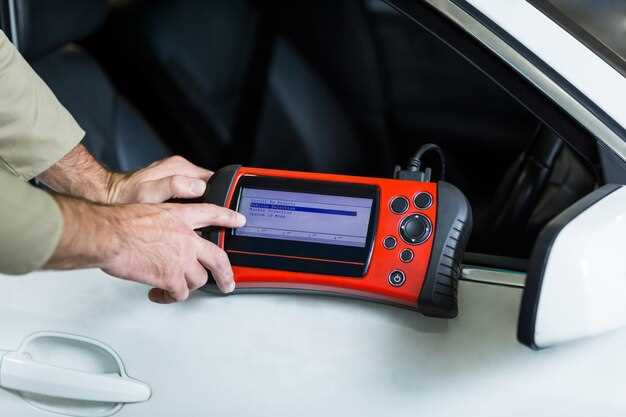
The check engine light is a critical indicator in any BMW, serving as a monitoring system for your vehicle’s engine. When illuminated, it signals the presence of an issue that could affect performance, emissions, or overall engine health. Understanding the symptoms associated with this warning light is essential for both novices and experienced drivers alike, providing valuable insights into potential problems before they escalate.
Common symptoms accompanying the check engine light include unusual noises from the engine, a decrease in fuel efficiency, and fluctuations in engine performance. These signs can vary from minor inconveniences to serious mechanical failures. Therefore, promptly diagnosing the root cause of the illumination is crucial for maintaining your BMW’s reliability and longevity.
This article will explore various symptoms that may trigger the check engine light, detailing their implications and offering practical solutions to rectify the underlying issues. By arming yourself with this knowledge, you can take proactive steps to ensure your BMW remains in peak condition.
Understanding Common Check Engine Light Codes for BMW Models
The Check Engine Light (CEL) on BMW models can appear due to various underlying issues, signaled through specific diagnostic trouble codes (DTCs). Understanding these codes is crucial for efficient diagnostics and timely resolution of potential problems.
One of the most commonly encountered codes is P0171, which indicates a lean fuel mixture. This often results from a faulty mass air flow sensor or a vacuum leak. If not addressed, it can lead to engine performance issues or even damage.
Another prevalent code is P0300, representing random/multiple cylinder misfire detected. This can stem from several causes, such as worn spark plugs, ignition coil issues, or fuel injector malfunctions. Misfires can severely affect engine efficiency and may require immediate diagnostics to prevent further damage.
The code P0420 signifies a catalyst efficiency problem, usually related to the catalytic converter’s performance. A failing converter can lead to increased emissions and reduced engine efficiency, necessitating a thorough inspection and potential replacement.
P0455 indicates a large leak in the evaporative emissions system. This issue may arise from a damaged gas cap or leaks in EVAP lines. Promptly addressing this code can prevent further complications related to fuel evaporation and emissions control.
Lastly, the code P0606 refers to the engine control module (ECM) performance issues. This indicates a potential internal failure of the ECM itself, requiring comprehensive diagnostics to determine if a software update or complete replacement is necessary.
In conclusion, familiarity with these common check engine light codes enables BMW owners to understand potential issues more clearly, facilitating efficient diagnostics and prompt solutions to maintain vehicle health and performance.
Step-by-Step Guide to Using OBD-II Scanners for Repairs

Using an OBD-II scanner is essential for accurate diagnostics and effective repairs of your BMW’s engine issues. Follow these steps to ensure proper usage and troubleshooting:
1. Locate the OBD-II Port: The OBD-II port is typically found under the dashboard on the driver’s side. Ensure the vehicle is off before connecting the scanner.
2. Connect the Scanner: Plug the OBD-II scanner into the port. Most scanners will power on automatically. If not, turn the vehicle’s ignition to the “On” position without starting the engine.
3. Retrieve Trouble Codes: Access the diagnostics menu on the scanner. Select the option to read trouble codes. The scanner will communicate with the vehicle’s ECU and display any stored engine codes.
4. Interpret the Codes: Write down the error codes shown. Use the scanner’s manual or an online database to understand the specific issues related to each code. This will guide your next steps in the repair process.
5. Research Possible Solutions: For each trouble code, investigate potential causes and solutions. Consider factors like faulty sensors, wiring issues, or other engine components that might contribute to the problem.
6. Clear the Codes: Once repairs are made, use the scanner to clear the trouble codes from the ECU. This will reset the check engine light. However, ensure that the underlying issues have been resolved before clearing codes, as this will prevent masking problems.
7. Monitor the Engine: After clearing codes, monitor the engine’s performance. If the check engine light reappears, recheck the codes to determine if any new issues have arisen.
8. Perform Regular Maintenance: Regularly running diagnostics with your OBD-II scanner can help catch engine problems early. Schedule periodic checks to maintain your BMW in optimal condition.
Utilizing an OBD-II scanner can streamline the repair process, providing valuable insights into your vehicle’s engine diagnostics and enabling proactive maintenance.
Identifying When to Seek Professional Help for Engine Diagnostics

Recognizing the signs that indicate a need for professional help in diagnosing your engine can save you time, money, and further complications down the line. If your BMW’s check engine light illuminates, it is a crucial first step to assess the severity of the issue.
Common symptoms that warrant immediate attention from a professional include unusual sounds emanating from the engine, such as knocking or pinging. These noises could indicate serious internal issues that require expert evaluation. Additionally, a noticeable decrease in engine performance, including reduced power or acceleration, should prompt you to seek assistance as it may suggest underlying problems affecting your vehicle’s efficiency.
If you experience frequent stalling or difficulties in starting your BMW, this could be a clear indication of engine trouble. Ignoring these symptoms may lead to more severe damage and costly repairs. Furthermore, if you notice any unusual smells, such as burning oil or gasoline, it’s imperative to contact a professional for diagnostic services, as these odors may signal significant issues within the engine system.
Lastly, consider seeking help if you encounter any persistent warning lights alongside the check engine light. These additional alerts often provide critical context for diagnosing the issue. A qualified technician possesses the expertise and specialized equipment to accurately diagnose and resolve engine problems, ensuring the longevity and reliability of your BMW.
